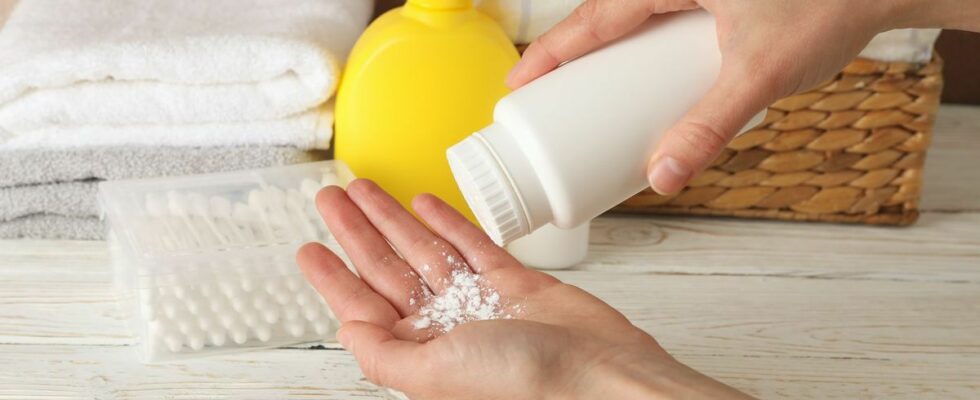Published on
Updated
Reading 2 min.
Present in many cosmetics and everyday products, talc has just been classified as probably carcinogenic by the World Health Organization. Should we consider it a danger?
While the debate has been going on for several years, the World Health Organization has just decided: talc is “probably” carcinogenic. However, the announcement may come as a surprise, given how common the product is in our daily lives. Talc, a natural mineral extracted in many regions of the world, is present in cosmetic powders, but also in the manufacture of paper, paint and even in certain automobile parts.
Moderate risk in ovarian cancer
Experts from the International Agency for Research on Cancer, meeting in Lyon on Friday, published their results in the journal The Lancet Oncology. They relied in particular on a combination of limited evidence of cancer in humans (ovarian cancer) and sufficient evidence in laboratory animals. Concretely, on their risk scale rated from 1 to 3, talc is classified 2A, therefore “probably carcinogenic“. According to them, exposure occurs mainly in the workplace during the extraction, grinding or processing of talc, or during the manufacture of products containing it. In the general population, it occurs in particular through the use of cosmetics and body powders containing talc.
However, experts do not rule out some bias in studies that have shown an increase in the incidence of cancer. Indeed, while the assessment focused on talc that did not contain asbestos, contamination of talc by asbestos, a related mineral, could not be ruled out in most studies on exposed humans.
A fear that has lasted for years
This is not the first time that the risk of cancer linked to talc has been raised. The concern arose in the 1970s, supported by studies that had pointed out a higher risk of ovarian cancer in talc users. However, in 2020, a synthesis of studies involving 250,000 women in the United States did not find a statistical link between the use of talc on the genitals and the risk of this particular cancer.
In the United States, also in the same year, the American pharmaceutical giant Johnson & Johnson had to withdraw its talc from the market, before recently committing to paying nearly 9 billion dollars to end all the proceedings.
Acrylonitrile also classified as carcinogenic
The WHO agency has also classified acrylonitrile, a volatile organic compound mainly used in the production of polymers, as “carcinogenic” to humans. This decision is based on “sufficient evidence of lung cancer” And “limited“bladder cancer in men, according to IARC.
These polymers are used in fibers for clothing, carpets, plastics for consumer products or automotive parts.
Acrylonitrile is also present in cigarette smoke. Air pollution is another source of exposure.
